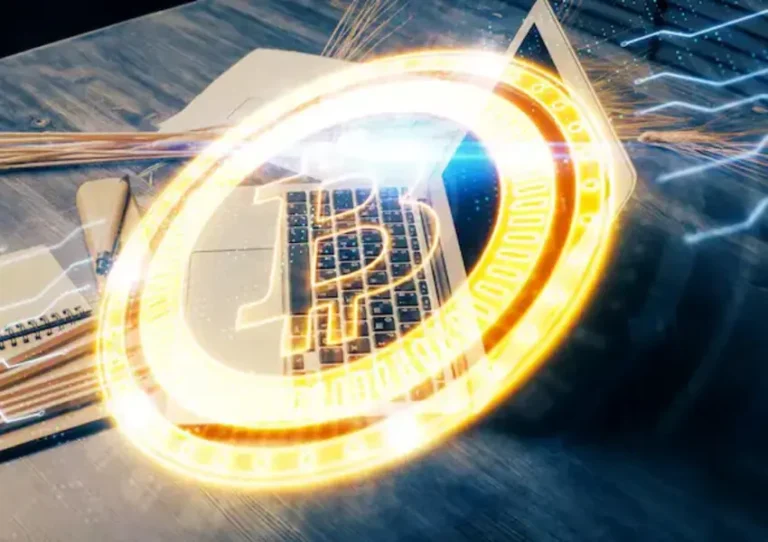The world of cryptocurrency is evolving rapidly. Decentralized Finance (DeFi) has gained attention in recent years. It offers new ways to manage and grow financial assets. You can do this without traditional intermediaries. At the same time, the rise of Next Gen Coin and DeFi is pushing the boundaries even further. But are they a perfect match? Let’s explore how the integration of Next Gen Coin and DeFi could change the future of finance.
What is DeFi?
Before we dive into how Next Gen Coin and DeFi work together, let’s first understand what DeFi is. DeFi refers to a set of financial services built on blockchain technology. These services operate without banks, brokers, or other centralized institutions. They use smart contracts. These are contracts that automatically execute when conditions in the code are met.
DeFi platforms allow users to borrow, lend, trade, and save money in a decentralized way. It eliminates middlemen and provides more transparency and control over personal assets. Popular DeFi applications include decentralized exchanges (DEXs), lending platforms, and stablecoins.
What is Next Gen Coin?
Next Gen Coin refers to newer cryptocurrencies designed with improved functionality and scalability. These coins are different from earlier ones like Bitcoin and Ethereum. They aim to fix common blockchain issues. Many blockchain projects face issues like slow transaction speeds, high fees, and energy inefficiency.
Next Gen Coins often use advanced consensus mechanisms, such as Proof of Stake (PoS) or Delegated Proof of Stake (DPoS), to make transactions faster and more energy-efficient. They also focus on enhancing security, privacy, and user experience.
Coins such as Solana, Polkadot, and Avalanche are considered part of the “Next Gen Coin” category. These coins are rapidly gaining popularity because they offer more features, scalability, and a smoother user experience.
How Do Next Gen Coin and DeFi Work Together?
Now, let’s explore how Next Gen Coin and DeFi complement each other. The core strength of DeFi lies in its ability to provide decentralized financial services. However, the success of these services depends on the underlying blockchain network. This is where Next Gen Coin comes into play.
1. Faster Transactions and Lower Fees
Next Gen Coin and DeFi together offer big benefits. They can make transactions faster and reduce fees. Older blockchains, like Bitcoin and Ethereum, often have scalability issues. This can result in slow transactions and high gas fees. This can make DeFi platforms expensive and inefficient to use.
Next Gen Coins, such as Solana, are designed to process transactions much faster than older networks. Solana, for example, can handle thousands of transactions per second (TPS), significantly reducing wait times and transaction costs. As a result, DeFi platforms built on Next Gen Coins can offer faster and cheaper financial services to users.
2. Enhanced Security and Privacy
Security is a top concern for both cryptocurrency users and DeFi platforms. Next Gen Coin and DeFi can help improve security through advanced cryptographic techniques. Newer coins often implement enhanced security features, such as quantum resistance and improved privacy protocols.
By using Next Gen Coins, DeFi platforms can offer users better protection against hacking and fraud. Moreover, these coins can provide more privacy options, allowing users to maintain control over their personal information. In an era where data privacy is becoming increasingly important, this is a major selling point.
3. Scalability for Growing DeFi Ecosystem
The DeFi sector is growing rapidly. However, this growth comes with challenges related to scalability. As more users participate in DeFi platforms, the underlying blockchain networks can become congested. This results in slower transaction speeds and higher costs.
Next Gen Coins are designed to scale effectively, making them ideal for DeFi applications. They use advanced technologies like sharding, Layer 2 solutions, and improved consensus mechanisms to handle more transactions without compromising on performance. By using these coins, DeFi platforms can support a growing user base without sacrificing speed or efficiency.
4. Interoperability Between Different Blockchains
A big challenge in DeFi is that different blockchain networks do not work well together. Ethereum-based DeFi platforms might not work well with other networks. This includes Binance Smart Chain and Polkadot.
Next Gen Coins focus on interoperability. This lets different blockchains talk to each other. This makes it easier for DeFi users to access a wide range of services across various networks. Next Gen Coin and DeFi can team up to build a better financial system. Improving cross-chain compatibility helps make this possible. This way, everyone can access finance more easily.
5. Innovative Financial Products
As Next Gen Coin and DeFi continue to evolve, we can expect to see new and innovative financial products emerge. Next Gen Coins often come with unique features that make them more adaptable to DeFi applications. For example, coins with built-in privacy features could be used to create decentralized lending platforms that prioritize user confidentiality.
Next Gen Coins also help DeFi platforms add advanced financial tools. These tools include synthetic assets, decentralized insurance, and automated market makers (AMMs). These products may expand what DeFi can do. They will create new chances for users to join the global financial system.
The Benefits of the Next Gen Coin and DeFi Integration
By combining the power of Next Gen Coin and DeFi, both industries can benefit in several ways:
1. Increased Adoption of DeFi
The faster, cheaper, and more secure nature of Next Gen Coin and DeFi integration can attract more users to decentralized finance. Lower transaction costs and faster processing times make DeFi more accessible to the average user. As a result, DeFi platforms may see an increase in user adoption and liquidity.
2. Improved User Experience
A major barrier to DeFi adoption is the complexity and high costs of decentralized platforms. With Next Gen Coin, users can experience smoother and more efficient interactions. Faster transactions, lower fees, and better security will enhance the overall user experience and make DeFi more user-friendly.
3. More Efficient Capital Allocation
Next Gen Coins provide better scalability and faster processing. This can improve how capital is allocated in DeFi platforms. Users can transfer assets between platforms instantly. They can also lend and borrow in a decentralized way with low fees. Additionally, they can quickly enter and exit liquidity pools. This level of efficiency benefits both individual users and the broader DeFi ecosystem.
Challenges to Overcome
While the combination of Next Gen Coin and DeFi is promising, there are challenges that need to be addressed:
- Adoption hurdles: Not all DeFi platforms have integrated Next Gen Coins yet, and some users are still hesitant to adopt newer coins.
- Regulatory concerns: DeFi remains largely unregulated, which could raise concerns for governments and financial institutions.
- Security risks: While Next Gen Coins offer enhanced security, DeFi platforms are still vulnerable to hacks and exploits.
Conclusion
The partnership between Next Gen Coin and DeFi appears to be a perfect match. Next Gen Coins boost DeFi. They provide faster transactions, lower fees, improved security, and better scalability. These technologies are changing fast. They will likely transform the financial industry. Users will gain more control over their assets and enjoy better financial options. Challenges still exist, so it will take time for these innovations to fully develop. Next Gen Coin and DeFi can still create a better and fairer financial system.






